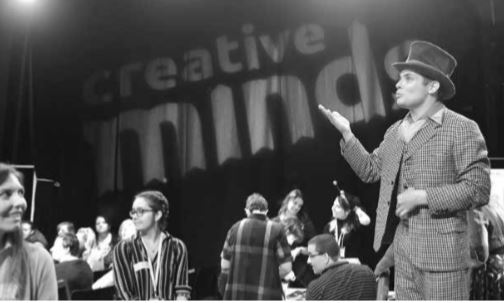The arts venues with the best access for their deaf and disabled visitors are those that consider access in its broadest possible sense, in my experience. At all costs, they avoid doing things in a particular way just because “that’s how we’ve always done it”.
They have rooted access in customer service, embedded it in staff training, and recognise it is not something affecting only wheelchair users. During my 20-plus years as an access officer in a 2,000seat theatre, I was fortunate to witness many changes and improvements in accessibility. There were changes through technology and, more importantly perhaps, changes in attitude.
We started to look beyond ramps and stairs and think about which of our other visitors were disabled by the way we provided services and ran our facilities. In the early days, the phrase “hidden impairments” was not known and we did not know how to improve theatre-going for people who had learning disabilities or those on the autistic spectrum.
Attendance anxiety
In 2013, after learning more about the high levels of anxiety some individuals felt when attending or even thinking about seeing a performance, I decided to run a familiarisation event. This was specifically for people who had a learning disability or a sensory and communication condition who feared the venue would not be a safe space or might be too overwhelming.
We invited people to look around the auditorium and public spaces to get a feel for them. At spaced-out intervals, we tried to replicate how it would feel during a live show by turning off the house lights and playing music through the PA system, which indicated how loud a show could be and how the space changed in the dark. For one family, whose son has complex learning disabilities, it changed their li

ves completely. Although an avid music lover, he had never attended a live event because of anxiety about doing this. After the familiarisation event, they gave it a try and have been to many, many shows since.
Afterwards, we promoted the fact that disabled people could come and visit us at any time to ensure we were accessible. One regular customer and her assistant would visit the empty auditorium a week before a performance. They would sit in the seats they would be using until everything felt relaxed. When they came for the show and it was loud and busy, some of that calm, safe feeling would remain.
First relaxed performance
In 2014, we held our first relaxed performance of a pantomime. Frontline staff had awareness training and we made small changes, including turning off background music and using symbols to make signs clearer. Changes were made to the show; the volume was reduced, pyrotechnics and loud bangs were removed and the house lights stayed partially on throughout. It was a great day and we had fantastic audience feedback.
These things take time to plan and implement. Unfortunately, time seems rarer than gold sometimes and twice as valuable, and is the best excuse in the world for not doing something. “Improving access” is often added to someone’s main job or taken on by a volunteer who may be passionate but not have the power to change anything.
Those who do it best make time for access. Being patient and looking again at how we do things is essential if venues are to be welcoming environments for some visitors with learning disabilities.
When I deliver accessibility training, I emphasise there are many simple ways to make improvements: identify chill-out spaces; create a visual story that shows what to expect when visiting the venue; use symbols to represent things such as the box office or toilets; provide sensory kits with ear defenders; and offer fidget toys to help reduce anxiety.
Relaxed performances, the Sunflower lanyard scheme (used to signify a hidden disability) and quiet hours (when noise and visual stimuli are as low as possible) are becoming more common, or at least awareness of them is improving. Increasingly, “relaxed buildings” are being talked about, thanks to excellent work by Jess Thom, co-founder of Touretteshero. The idea that we must conform and behave in certain ways to be welcome somewhere is, thankfully, falling out of fashion in some quarters.
After Covid-19, please let’s not go back to “normal”. Normal was exclusionary, elitist and, worst of all, ableist. Normal was a den of inequity. I don’t want a new normal but something braver and broader, without the limiting boundaries that excluded so many.
The arts are often where change happens first. Although the doors are shut to everyone now, when they open again let’s make sure they are open to all.
